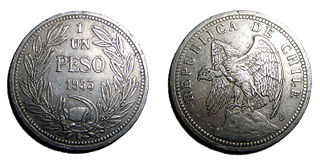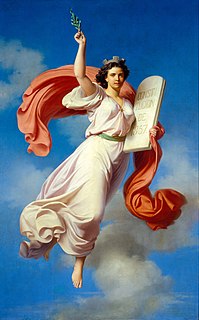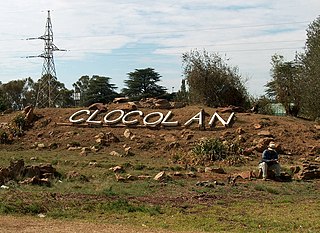 W
WLand reform involves the changing of laws, regulations or customs regarding land ownership. Land reform may consist of a government-initiated or government-backed property redistribution, generally of agricultural land. Land reform can, therefore, refer to transfer of ownership from the more powerful to the less powerful, such as from a relatively small number of wealthy owners with extensive land holdings to individual ownership by those who work the land. Such transfers of ownership may be with or without compensation; compensation may vary from token amounts to the full value of the land.
 W
WHaleh Afshar, Baroness Afshar, is a British life peer in the House of Lords
 W
WThe Chilean land reform was a process of land ownership restructuring that occurred from 1962 to 1973 in different phases. For much of the 20th century agriculture was one of the most backward sectors of Chilean economy. The land reform was initially supported by Chilean right, centre and left political parties plus the Catholic Church and the United States. After the 1973 Chilean coup d'état the ruling right-wing dictatorship initiated a counter-reform that reverted part of it and directed Chilean agriculture into a "neoliberal" model.
 W
WThe Chinese Land Reform Movement, also known by the Chinese abbreviation Tǔgǎi (土改), was a campaign by the Communist Party leader Mao Zedong during the late phase of the Chinese Civil War and the early People's Republic of China. The campaign involved mass murder of landlords by tenants and land redistribution to the peasantry. The estimated amount of casualties of the movement ranges from hundreds of thousands to millions. In terms of the communist party's evaluation Zhou Enlai estimated 830,000 had been killed and Mao Zedong estimated as many as 2 to 3 million were killed.
 W
WOne of the central events of the French Revolution was to abolish feudalism, and the old rules, taxes and privileges left over from the age of feudalism. The National Constituent Assembly, acting on the night of 4 August 1789, announced, "The National Assembly abolishes the feudal system entirely." It abolished both the seigneurial rights of the Second Estate and the tithes gathered by the First Estate. The old judicial system, founded on the 13 regional parlements, was suspended in November 1789, and finally abolished in 1790.
 W
WThe 1930 Land Apportionment Act made it illegal for Africans to purchase land outside of established Native Purchase Areas in the region of Southern Rhodesia, what is now known as Zimbabwe. Before the 1930 act, land was not openly accessible to natives, but there were also no legal barriers to ownership. The Act was passed under British colonial rule in an attempt to prevent a loss of government authority over those native to the region.
 W
WLand consolidation is a planned readjustment and rearrangement of fragmented land parcels and their ownership. It is usually applied to form larger and more rational land holdings. Land consolidation can be used to improve rural infrastructure and to implement developmental and environmental policies.
 W
WLand Reform in Developing Countries: Property Rights and Property Wrongs is a 2009 book by the Leontief Prize–winning economist Michael Lipton. It is a comprehensive review of land reform issues in developing countries and focuses on the evidence of which land reforms have worked and which have not.
 W
WThe Lerdo Law , or Ley Lerdo in Spanish, is the common name for the Reform law formally known as the Confiscation of Law and Urban Ruins of the Civil and Religious Corporations of Mexico. It was drafted by Miguel Lerdo de Tejada and enacted on 25 June 1856 by President Ignacio Comonfort.
 W
WBefore the 1910 Mexican Revolution that overthrew Porfirio Díaz, most land in post-independence Mexico was owned by wealthy Mexicans and foreigners, with small holders and indigenous communities retaining little productive land. This was a dramatic change from the situation of land tenure during the colonial era, when the Spanish crown protected holdings of indigenous communities that were mostly engaged in subsistence agriculture. Mexican elites created large landed estates (haciendas) in many parts of Mexico, especially the north where indigenous peoples were generally not agriculturalists. Small holders, many of whom were mixed-race mestizos, engaged with the commercial economy. Since foreigners were excluded from colonial Mexico, landholding was in the hands of subjects of the Spanish crown. With Mexican independence in 1821 and the emergence of Mexican Liberals, the economic development and modernization of the country was a key priority. Liberals targeted corporate landholding by both the Roman Catholic Church and indigenous villages, for they were seen as impediments to their modernization project. When liberals gained power in the mid nineteenth century, they passed laws in the Liberal Reform that mandated the breakup and sale of these corporate lands. When liberal army general Porfirio Díaz took power in 1876, he embarked on a more sweeping program of modernization and economic development. His land policies sought to lure foreign entrepreneurs to invest in Mexican mining, agriculture, and ranching. It was successful, with Mexican and foreign investors controlling the majority of Mexican territory by the outbreak of the Mexican Revolution in 1910. Peasant mobilization against the landed elites during the revolution and calls for "Mexico for the Mexicans" prompted land reform in the post-revolutionary period.
 W
WLand reform is an important political and economic topic in Namibia. It consists of two different strategies: resettlement, and transfer of commercially viable agricultural land. Resettlement is aimed at improving the lives of displaced or dispossessed previously disadvantaged Namibians. Farms obtained by government for resettlement purposes are usually split into several sections, and dozens of families are being resettled on what had previously been one farm. Transfer of commercial agricultural land is not directly conducted by government. Would-be farmers with a previously disadvantaged background obtain farms privately or through affirmative action loans. In both cases, the "Willing buyer, willing seller" principle applies.
 W
WHacienda Luisita is a 6,453-hectare sugar plantation located in the province of Tarlac, Philippines. The hacienda spans 11 barangays in three towns of Tarlac province. Most of the original farmworkers reside in 10 villages – Barangays Balete, Cutcut, Lourdes, Mapalacsiao, Asturias, and Bantog in Tarlac City; Barangay Motrico in La Paz town; and Barangays Parang, Mabilog and Pando in Concepcion town. The original estate includes the Central Azucarera de Tarlac (CAT) sugar mill and a golf course. The eleventh village is Barangay Central in Tarlac City which houses the CAT sugar mill, the St. Martin de Porres Hospital and the Our Lady of Lourdes Church. It features Luisita Golf and Country Club, a golf course and Las Haciendas de Luisita Subdivision, a 5-interconnected luxury subdivision.
 W
WLand Bank of the Philippines, stylized as LANDBANK or also known by its initials, LBP, is a universal bank in the Philippines owned by the Philippine government with a special focus on serving the needs of farmers and fishermen. While it provides the services of a universal bank, it is officially classified as a "specialized government bank" with a universal banking license.
 W
WProsper Australia is a non-profit association incorporated in the State of Victoria, Australia dedicated to reforming taxes onto land as articulated by Adam Smith, the Physiocrats, John Stuart Mill, and most notably by Henry George in Progress and Poverty.
 W
WThe Reform laws were a set of anticlerical laws enacted in Mexico between 1855 and 1863, during the governments of Juan Alvarez, Ignacio Comonfort and Benito Juárez that were intended to limit the privileges (fueros) of the Roman Catholic Church and the military. The laws also limited the ability of Catholic Church and indigenous communities from collectively holding land. The liberal government sought the revenues from the disentailment of church property, which could fund the civil war against Mexican conservatives and to broaden the base of property ownership in Mexico and encouraging private enterprise. Several of them were raised to constitutional status by the constituent Congress that drafted the liberal Constitution of 1857. Although the laws had a major impact on the Catholic Church in Mexico, liberal proponents were not opposed to the church as a spiritual institution, but rather sought a secular state and a society not dominated by religion.
 W
WClocolan, established in 1906, is a small town in the Free State Province of South Africa. The Basotho called the place Hlohlolwane. New inhabitants mispronounced the name and called it Clocolan.
 W
WThaba 'Nchu is a town in Free State, South Africa, 63 km east of Bloemfontein and 17 km east of Botshabelo. The population is largely made up of Tswana and Sotho people. The town was settled in December 1833 and officially established in 1873. The town grew larger following the 1913 Natives' Land Act that stated Thaba 'Nchu as a homeland for Tswana people. It was known among the Voortrekkers as Blesberg.
 W
WThe Stolypin agrarian reforms were a series of changes to Imperial Russia's agricultural sector instituted during the tenure of Pyotr Stolypin, Chairman of the Council of Ministers. Most, if not all, of these reforms were based on recommendations from a committee known as the "Needs of Agricultural Industry Special Conference," which was held in Russia between 1901–1903 during the tenure of Minister of Finance Sergei Witte.
 W
WThe White Revolution or the Shah and People Revolution was a far-reaching series of reforms in Iran launched in 1963 by the Shah, Mohammad Reza Pahlavi, which lasted until 1979. He reformed the program which was built especially to weaken those classes that supported the traditional system. It consisted of several elements, including land reform, sale of some state-owned factories to finance the land reform, construction of an expanded road, rail, and air network, a number of dam and irrigation projects, the eradication of diseases such as malaria, the encouragement and support of industrial growth, enfranchisement of women, nationalization of forests and pastures, formation of literacy and health corps for rural isolated areas, and institution of profit sharing schemes for workers in industry. In the 1960s and 1970s, the Shah sought to develop a more independent foreign policy and established working relationships with the Soviet Union and eastern European nations. In subsequent decades, per capita income for Iranians greatly increased, and oil revenue fueled an enormous increase in state funding for industrial development projects.
 W
WLand reform in Zimbabwe officially began in 1980 with the signing of the Lancaster House Agreement, as an anti-racist effort to more equitably distribute land between black subsistence farmers and white Zimbabweans of European ancestry, who had traditionally enjoyed superior political and economic status. The programme's stated targets were intended to alter the ethnic balance of land ownership.